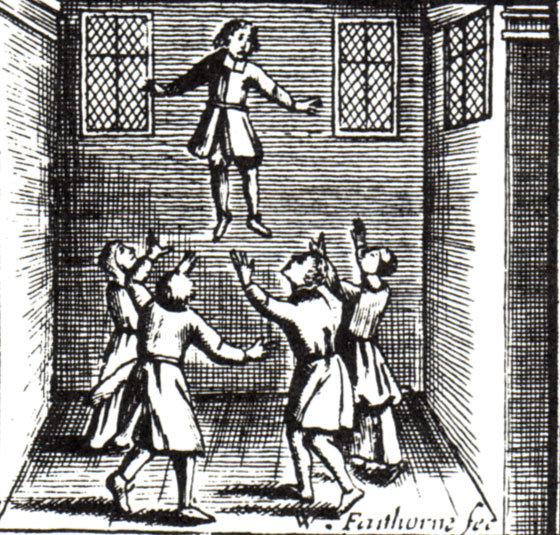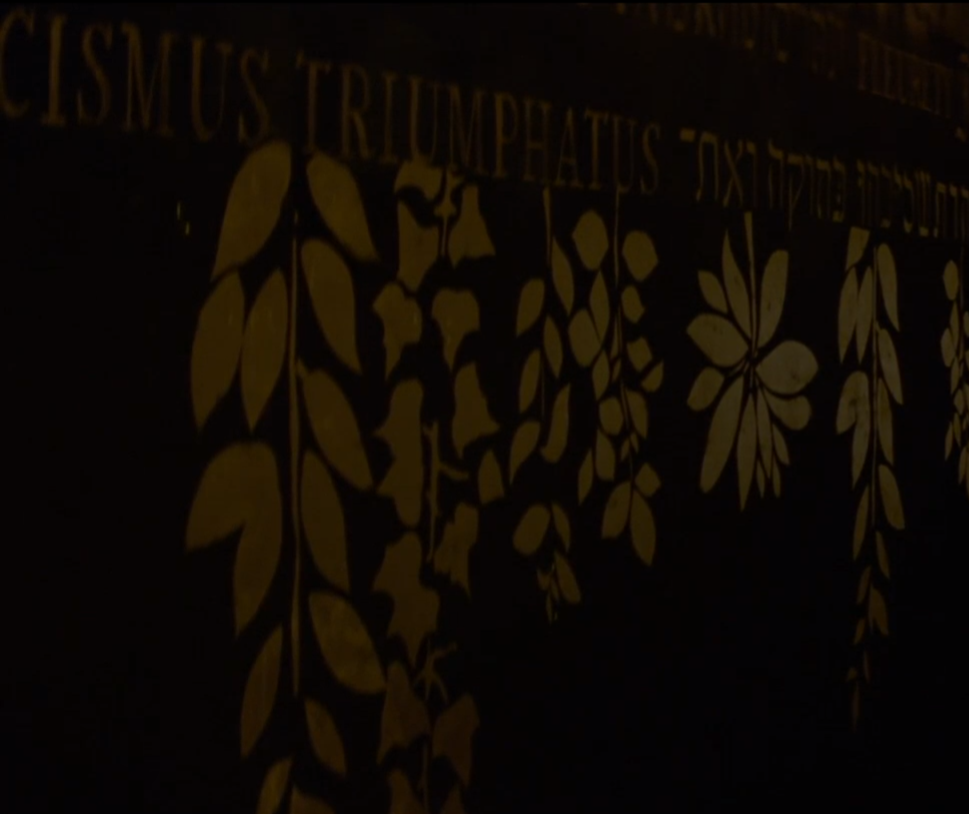Saducismus Triumphatus on:
[Wikipedia]
[Google]
[Amazon]
''Saducismus triumphatus'' is a book on
 The book strongly influenced
The book strongly influenced

Graphical reproduction of ''Sadducismus Triumphatus''
at the University of Pennsylvania library.
''Sadducismus Triumphatus''
at the Internet Archive. 1681 books Witchcraft in England Supernatural books Witchcraft treatises
witchcraft
Witchcraft traditionally means the use of magic or supernatural powers to harm others. A practitioner is a witch. In medieval and early modern Europe, where the term originated, accused witches were usually women who were believed to have us ...
by Joseph Glanvill
Joseph Glanvill (1636 – 4 November 1680) was an English writer, philosopher, and clergyman. Not himself a scientist, he has been called "the most skillful apologist of the virtuosi", or in other words the leading propagandist for the approa ...
, published posthumously in England in 1681.
The editor is presumed to have been Henry More
Henry More (; 12 October 1614 – 1 September 1687) was an English philosopher of the Cambridge Platonist school.
Biography
Henry was born in Grantham, Lincolnshire on 12 October 1614. He was the seventh son of Alexander More, mayor of Gran ...
, who certainly contributed to the volume; and topical material on witchcraft in Sweden
Sweden, formally the Kingdom of Sweden,The United Nations Group of Experts on Geographical Names states that the country's formal name is the Kingdom of SwedenUNGEGN World Geographical Names, Sweden./ref> is a Nordic country located on ...
was supplied by Anthony Horneck
Anthony Horneck (german: Anton Horneck; 1641–1697) was a German Protestant clergyman and scholar who made his career in England. He became an influential evangelical figure in London from the later 1670s, in partnership with Richard Smithies, ...
to later editions. By 1683 this appeared as a lengthy appendix. Horneck's contribution came from a Dutch pamphlet of 1670.Ankarloo, Bengt and Henningsen, Gustav (editors) ''Early Modern European Witchcraft: Centres and Peripheries'' (1990). Oxford: Oxford University Press. p. 431-3. Its composition is mentioned in the chapter on Transportation by an invisible power in the Miscellanies of John Aubrey
John Aubrey (12 March 1626 – 7 June 1697) was an English antiquary, natural philosopher and writer. He is perhaps best known as the author of the ''Brief Lives'', his collection of short biographical pieces. He was a pioneer archaeologist, ...
.
The book affirmed the existence of witch
Witchcraft traditionally means the use of Magic (supernatural), magic or supernatural powers to harm others. A practitioner is a witch. In Middle Ages, medieval and early modern Europe, where the term originated, accused witches were usually ...
es with malign supernatural powers of magic
Magic or Magick most commonly refers to:
* Magic (supernatural), beliefs and actions employed to influence supernatural beings and forces
* Ceremonial magic, encompasses a wide variety of rituals of magic
* Magical thinking, the belief that unrela ...
, and attacked skepticism
Skepticism, also spelled scepticism, is a questioning attitude or doubt toward knowledge claims that are seen as mere belief or dogma. For example, if a person is skeptical about claims made by their government about an ongoing war then the pe ...
concerning their abilities. Glanvill likened these skeptics to the Sadducee
The Sadducees (; he, צְדוּקִים, Ṣədūqīm) were a socio-religious sect of Jewish people who were active in Judea during the Second Temple period, from the second century BCE through the destruction of the Temple in 70 CE. The ...
s, members of a Jew
Jews ( he, יְהוּדִים, , ) or Jewish people are an ethnoreligious group and nation originating from the Israelites Israelite origins and kingdom: "The first act in the long drama of Jewish history is the age of the Israelites""Th ...
ish sect
A sect is a subgroup of a religious, political, or philosophical belief system, usually an offshoot of a larger group. Although the term was originally a classification for religious separated groups, it can now refer to any organization that b ...
from around the time of Jesus
Jesus, likely from he, יֵשׁוּעַ, translit=Yēšūaʿ, label=Hebrew/Aramaic ( AD 30 or 33), also referred to as Jesus Christ or Jesus of Nazareth (among other names and titles), was a first-century Jewish preacher and religious ...
who were said to have denied the immortality of the soul
Christian mortalism is the Christianity, Christian belief that the human Soul (spirit), soul is not naturally Immortality of the soul, immortal and may include the belief that the soul is “sleeping” after death until the Resurrection of the ...
. The book is also noted for the account of the Drummer of Tedworth
The Drummer of Tedworth is a case of an alleged poltergeist manifestation in the West Country of England by Joseph Glanvill, from his book ''Saducismus Triumphatus'' (1681).
History
Early accounts reported that in 1661 a local landowner, John M ...
, an early poltergeist
In ghostlore, a poltergeist ( or ; German for "rumbling ghost" or "noisy spirit") is a type of ghost or spirit that is responsible for physical disturbances, such as loud noises and objects being moved or destroyed. Most claims or fictional descr ...
story, and for one of the earliest descriptions of the use of a witch bottle, a countercharm against witchcraft.
Influence
 The book strongly influenced
The book strongly influenced Cotton Mather
Cotton Mather (; February 12, 1663 – February 13, 1728) was a New England Puritan clergyman and a prolific writer. Educated at Harvard College, in 1685 he joined his father Increase as minister of the Congregationalist Old North Meeting H ...
in his ''Discourse on Witchcraft'' (1689) and the Salem witch trials
The Salem witch trials were a series of hearings and prosecutions of people accused of witchcraft in colonial Massachusetts between February 1692 and May 1693. More than 200 people were accused. Thirty people were found guilty, 19 of whom w ...
held in 1692–3 in Salem, Massachusetts
Salem ( ) is a historic coastal city in Essex County, Massachusetts, located on the North Shore of Greater Boston. Continuous settlement by Europeans began in 1626 with English colonists. Salem would become one of the most significant seaports tr ...
. Mather's ''Wonders of the Invisible World
''The Wonders of the Invisible World'' was a book written by Cotton Mather and published in 1693. It was subtitled, ''Observations As well Historical as Theological, upon the Nature, the Number, and the Operations of the Devils''. The book defend ...
'' (1693) is largely modeled after this book and its reports, particularly the material relating to the Mora witch trial
The Mora witch trial, which took place in Mora, Sweden, in 1669, is the most internationally famous Swedish witch trial. Reports of the trial spread throughout Europe, and a provocative German illustration of the execution is considered to have h ...
of 1669. The book is cited by H. P. Lovecraft in his short story " The Festival". Shirley Jackson quoted passages from the book in her short story collection ''The Lottery and Other Stories
''The Lottery and Other Stories'' is a 1949 short story collection by American author Shirley Jackson. Published by Farrar, Straus, it includes "The Lottery" and 24 other stories. This was the only collection of her stories to appear during her l ...
''.
In popular culture
It is possible to read the title painted on the walls of the secret passage inDario Argento
Dario Argento (; born 7 September 1940) is an Italian film director, producer, screenwriter, actor and film critic, critic. His influential work in the horror film, horror genre during the 1970s and 1980s, particularly in the subgenre known as ...
's 1977 film ''Suspiria
''Suspiria'' () is a 1977 Italian supernatural horror film directed by Dario Argento, who co-wrote the screenplay with Daria Nicolodi, partially based on Thomas De Quincey's 1845 essay ''Suspiria de Profundis''. The film stars Jessica Harper as ...
'' at 01:29:19.

See also
*Blockula
Blockula (Blåkulla in modern Swedish, translated to "Blue Hill") was a legendary island where the Devil held his Earthly court during a witches' Sabbath. It was described as containing a massive meadow with no visible end, and a large house whe ...
*''Malleus Maleficarum
The ''Malleus Maleficarum'', usually translated as the ''Hammer of Witches'', is the best known treatise on witchcraft. It was written by the German Catholic clergyman Heinrich Kramer (under his Latinized name ''Henricus Institor'') and first ...
''
*''Formicarius
The ''Formicarius'', written 1436–1438 by Johannes Nider during the Council of Florence and first printed in 1475, is the second book ever printed to discuss witchcraft (the first book being Alphonso de Spina's ''Fortalitium Fidei''). Nider de ...
''
* Domen, Norway
Domen is a mountain on the Varanger Peninsula in eastern Troms og Finnmark county, Norway. The tall mountain is located near the coast between the small fishing village Kiberg and the island of Vardøya. Domen is bare and flat-topped, with a stee ...
* Brocken
The Brocken, also sometimes referred to as the Blocksberg, is the highest peak in the Harz mountain range and also the highest peak in Northern Germany; it is near Schierke in the German state of Saxony-Anhalt between the rivers Weser and Elbe. ...
Notes
{{ReflistExternal links
Graphical reproduction of ''Sadducismus Triumphatus''
at the University of Pennsylvania library.
''Sadducismus Triumphatus''
at the Internet Archive. 1681 books Witchcraft in England Supernatural books Witchcraft treatises